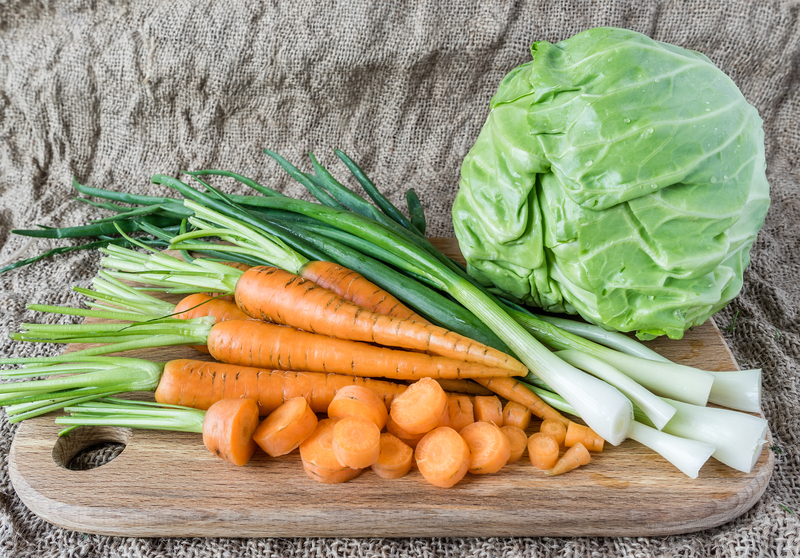Strategies for Guarding Your Plants Against Winter
Posted on 21/08/2025
Strategies for Guarding Your Plants Against Winter
As temperatures drop and the days grow shorter, gardeners and plant lovers alike start to worry about winter plant protection. The cold season brings a unique set of challenges: freezing winds, frost heaves, snow accumulation, and unpredictable temperature swings can all threaten the health of your outdoor and indoor plants. Fortunately, with proper preparation and effective strategies, you can guard your plants against winter and ensure they thrive come spring. In this comprehensive guide, we'll explore proven techniques, expert recommendations, and practical tips for successful winter plant care.
Why Is Winter Protection for Plants So Important?
Many plants, whether annuals, perennials, shrubs, or trees, are vulnerable to damage during the cold season. Without protection, they can suffer from:
- Frost damage -- Freezing temperatures can burst plant cells, leading to blackened leaves and stems.
- Desiccation -- Cold, dry winds strip moisture from plants faster than roots can replace it.
- Root injury -- Even hardy roots may be damaged by fast temperature fluctuations or deeply frozen soils.
- Rodent and wildlife damage -- Mice, rabbits, and deer often nibble on bark or stems during scarce winter months.
- Heavy snowfall and ice breakage -- Snow accumulation can snap branches or crush delicate structures.

Main Strategies for Guarding Your Plants Against the Cold
There's no one-size-fits-all solution, but a customized approach to winter plant care will keep your garden lush and resilient. Below, we discuss essential steps and advanced techniques for shielding most types of plants from winter weather.
1. Know Your Hardiness Zone and Plant Selection
Before employing any specific protection tactic, it's vital to understand your USDA Plant Hardiness Zone or an equivalent in your region. This information guides you in:
- Choosing plants suited for your climate. Select varieties known for their cold tolerance if you live in a region with extreme winters.
- Understanding when protection is necessary. Some native or well-adapted species may not require extra measures, while exotics and tender perennials will need more attention.
2. Mulching: Your Plants' First Line of Defense
Applying mulch is one of the simplest and most effective strategies for guarding plants against cold weather. Mulch acts as natural insulation by:
- Regulating soil temperature and preventing rapid freezing and thawing that can heave roots out of the ground.
- Retaining valuable moisture during dry spells associated with winter winds.
- Suppressing weed growth that competes for limited resources.
- Shredded leaves
- Bark chips
- Pine needles
- Sawdust
- Sterilized straw (avoid hay, which may harbor weed seeds)
3. Shielding Tender Plants: Covers, Cloches, and Insulation
Some plants are especially vulnerable and need extra barriers. For added protection:
- Use garden fabrics such as floating row covers, frost blankets, or burlap wraps to insulate vulnerable plants.
- Employ cloches -- These bell-shaped structures (made of glass or plastic) work well for young seedlings or small flowering plants. DIY options include cut plastic bottles or jars.
- Install windbreaks or screens near sensitive shrubs and young trees to block prevailing winter winds.
4. Watering and Moisture Management
Proper hydration before freeze-up is essential in preventing desiccation:
- Deeply water plants in late autumn, particularly evergreen trees, shrubs, and perennials. Moist soil retains heat better than dry soil.
- Monitor winter rainfall/snowfall. In periods of prolonged dryness and above-freezing temperatures, water as necessary.
5. Protecting Container and Potted Plants
Potted plants are more exposed since their roots are above ground level. Strategies for protecting containers in winter include:
- Moving pots to sheltered locations, such as unheated garages, sheds, or against south-facing walls.
- Grouping pots together to minimize exposure and create a microclimate.
- Wrapping pots with insulating materials -- burlap, bubble wrap, or garden fleece -- to buffer against chills.
- Raising pots onto feet or bricks to ensure drainage and prevent soggy roots.
6. Pruning and Garden Cleanup
Careful pruning and cleanup will help your plants weather the cold and prevent disease and pest issues in winter:
- Prune dead, damaged, or diseased branches from shrubs and trees to reduce snow or ice breakage.
- Don't prune spring-blooming plants in the fall, or you may remove next year's buds.
- Remove fallen leaves and debris, especially from around rose bushes or fruit trees, to minimize fungal and rodent problems.
7. Guarding Against Rodent and Wildlife Damage
When food is scarce, rodents and wildlife may strip bark, chew stems, or dig roots:
- Install hardware cloth or tree guards around trunks of young trees to prevent gnawing.
- Use repellents (natural or commercial) on vulnerable shrubs or bulbs.
- Clear debris and tall grass away from plant bases to reduce shelter for critters.
- Consider physical barriers like fences or mesh for high-value garden areas.
8. Special Considerations for Specific Plants
Certain categories of plants require tailored approaches during winter:
- Roses: Mound extra soil or compost around the base and cover with burlap or rose cones after the final thaw.
- Hydrangeas: Avoid heavy pruning; cover with pine boughs or straw to protect buds, especially on new varieties.
- Bulbs: Apply mulch after planting and use wire mesh or grit to deter digging animals.
- Vegetable gardens: Use hoop houses, cold frames, or thick mulch for crops like carrots or garlic overwintered in beds.
Advanced Methods & Innovative Approaches to Winter Plant Care
Building Cold Frames and Mini Greenhouses
If you want to extend your growing season or maximize protection for tender plants in winter:
- Construct simple cold frames from old windows or clear plastic sheeting over wooden frames.
- Mini greenhouses, whether permanent or portable, provide excellent insulation for raised beds, seedlings, or container gardens.
- Ventilate regularly on sunny days to prevent overheating or fungal buildup.
Using Anti-Desiccant Sprays
Broadleaf evergreens, such as rhododendrons and some hollies, lose moisture even in winter. To reduce winter leaf scorch:
- Apply anti-desiccant sprays (available at garden centers) to coat leaves and slow water loss.
- Repeat applications as directed, especially before major cold snaps.
Heating Solutions for Sensitive Environments
For those with valuable or tropical plants, consider active heating solutions:
- Use heat mats under seed trays or inside greenhouses for starting or overwintering sensitive varieties.
- Install outdoor-rated string lights (non-LED for gentle warmth) under coverings for extra heat.
- Small space heaters with thermostats can be used in greenhouses -- but always follow fire safety precautions.
Essential Winter Plant Care Checklist
- Inventory your plants and identify those needing extra protection.
- Apply mulch to insulate roots and retain soil warmth.
- Install covers, frames, or cloches as necessary.
- Deep water before the soil freezes.
- Prune only as recommended for each species.
- Move or insulate potted plants.
- Guard against rodents and wildlife.
- Check periodically for signs of damage.
Common Winter Plant Protection Mistakes to Avoid
- Waiting too long to apply mulch or covers. (Do this after a hard frost, but before deep freezes begin.)
- Using plastic sheeting directly on plants, which can trap moisture and cause mold.
- Neglecting to ventilate covered plants -- without airflow, rot becomes a real risk.
- Overwatering just before a freeze, leading to root rot.
- Relying on toxic chemical repellents that may harm pets or pollinators.

Looking Ahead: Post-Winter Recovery and Plant Revival
Once spring arrives:
- Gradually remove winter protection as temperatures stabilize to avoid shocking plants with sudden exposure.
- Prune out any winter-damaged wood and feed plants with a balanced fertilizer.
- Watch for signs of delayed stress, such as leaf scorch or dieback, and respond quickly.
Conclusion: Master the Art of Guarding Your Plants Against Winter
Safeguarding your garden from harsh winter weather ensures that your landscape remains vibrant and full of life year after year. Whether you rely on mulch, row covers, cold frames, or custom strategies for different plants, thoughtful preparation is key. By combining these smart strategies for guarding your plants against winter with attentive aftercare, you can enjoy a thriving, stress-free garden in any climate. Start planning today - your future garden (and plants!) will thank you for it.

